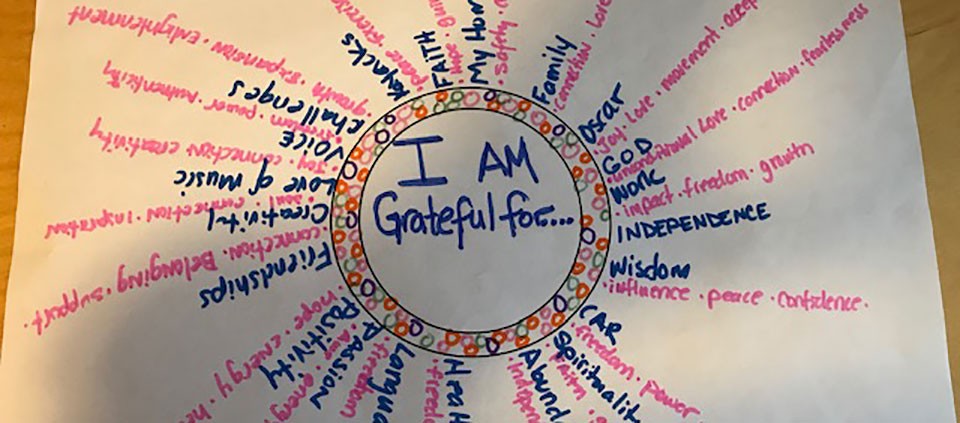Using Mandalas to Practice Gratitude and Mindfulness

For nearly two years, I had what I would describe as a strong and steady meditation practice. One day, during a difficult period of my life, I found myself having a hard time quieting down. My mind just couldn’t slow down, let alone get still. The harder I tried, the louder the chatter.
Then, while sitting at my desk, I came across an adult coloring book and, with a bountiful array of colored Sharpies before me, I suddenly found myself excited to find the perfect mandala to color. An hour and a half later, I suddenly realized that I had just spent 90 minutes meditating! I not only discovered a new passion but also a new way to practice mindfulness.
Drawing and coloring mandalas are my absolute favorite ways lately of expressing creativity. It is said that connecting with creativity is a sure path to one’s soul, uncovering our unique essence, gifts, and passions. I was curious what it is about coloring or designing mandalas that stimulate this kind of vibration for me, and I learned that the act of creating a mandala is also believed to have strong spiritual power. In Sanskrit, mandala means “circle”—a sacred circle embodying a container for the essence within.
In Buddhism, the mandala's purpose is to help transform ordinary minds into enlightened ones, and to assist with healing. Mandalas generally have one identifiable center point, from which emanates an array of symbols, shapes, and forms. I was fascinated by videos of Buddhist monks spending days creating intricate mandalas, filling these shapes and symbols with colored sand, creating a fantastic work of art—only to sweep away the sand a few seconds after completion as a reminder of impermanence. Then they pour the sand along the riverbeds, sending gratitude and compassion into the universe.
These colorful, intriguing works of art, stunningly beautiful and inspiring, hold deeper intentions. Monks often use mandalas as a meditation practice for healing and compassion. The repetition of patterns, colors, and shapes invite the practice of pure presence … nothing to do but stay in the moment, in the flow. Working with mandalas is a playful, creative, and inspiring way to practice self-discovery and mindfulness.
Lately, my passion for mandalas has evolved into using this meditative practice to focus on gratitude. Each time I create a new shape or form, I invite a thought of something I am grateful for. The layers of repetitive patterns and intricate details offer time for me to find a true connection to each blessing and gift.
Another way to use mandalas as a gratitude practice is to draw a circle and write inside it the words I am grateful for. Then, writing outward from the circle, like rays of the sun, identify the things you are grateful for in a particular color and style. Beneath each “ray,” in a different color and smaller size, identify what that thing may bring you: For example, under Health, you might write longevity, vitality, confidence; under Work, you might write prosperity, purpose, community.
There are no rules. Experiment with different ways and formats, such as drawing petals, and writing something you are grateful for inside each, or using words in a circular formation.
When I offer gratitude mandala classes, I am often surprised by the pure joy that participants express when they spend time focusing on what is right about their lives, as opposed to what is wrong. Their shift in energy and thoughts toward an attitude of gratitude often helps them transform their greatest adversities into blessings.
© Kripalu Center for Yoga & Health. All rights reserved. To request permission to reprint, please email editor@kripalu.org.
Izzy Lenihan is a certified life, career, and wellness coach who has helped thousands of people make changes in all stages of their lives for more than 25 years.
Full Bio and Programs